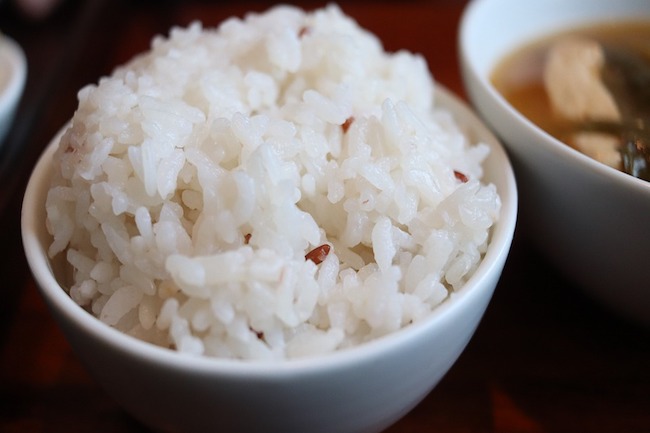20 Foods With The Longest Shelf Life For Your Pantry by M.D. Creekmore for MD Creekmore
by Amanda Hermes
There is a surprising variety of foods that can last for years, or even forever, at room temperature when stored correctly. For all of these foods, the storage method is paramount. To protect your food supplies, store them in airtight containers in cool, dry locations away from light.
Containers might be bins, jars or cans with lids or even plastic bags that close securely. Buying in bulk is a great strategy, but most foods last much longer unopened, so obtaining many smaller containers might be more beneficial, depending on the food.
Moisture is the number one cause of food spoilage because microbes, such as bacteria, molds, and yeasts, flourish in moist locations. These microorganisms feed on food matter and decompose it. Like humans, microorganisms require water to survive, so if you remove moisture from food, it will not decompose, or spoil.
Naturally occurring enzymes in food can react with oxygen to cause spoiling and ripening that destroys food, but these enzymes also need water, so without moisture, this reaction can’t take place.
Make sure to keep long-term foods in cool areas, since heat can cause sweating, which can produce enough moisture for mold to grow. Darker places are also better for storage since sunlight can increase temperature.
While the foods below can last for relatively long periods, always discard foods that have a bad odor, flavor, or appearance. If mold or insects ever appear in your food, discard it immediately,
as these can present serious health hazards if eaten.
Below are twenty foods with remarkably long shelf lives to stock your survival pantry.
1. Dried Beans and Legumes
Legume is a generic term for beans, peas, and lentils. All of these are low-fat, cholesterol-free sources of high-quality protein and fiber, which means they are good for satisfying hunger. All varieties of dried beans and legumes will last indefinitely if stored correctly, that is, in an airtight container in a cool, dry place, according to chef and food scientist Mark Bittman.
Although there are hundreds of varieties of dried legumes, almost all can be prepared in the same way.
To make dried legumes edible, simply place them in a large pot and cover with water. Heat to a boil, and then turn the heat down and cover loosely. Cook, stirring occasionally until the beans are tender. How long this takes depends on the size of the legume you are cooking.
Peas might only take 30 minutes, while kidney beans take about an hour to soften. Legumes that are older than one year might take longer to soften.
2. White, Long-Grain Rice
Basic white, long-grain rice is another food staple that will last indefinitely if stored in an airtight container in a cool, dry place. Brown rice will last approximately one year, but its bran contains oils that can go rancid, whereas the bran has been removed from white rice, allowing it to last pretty much forever.
Rice is basically 100 percent carbohydrates, which provide energy, but not a lot of nutrition. However, it does contain magnesium, vitamin B6, as well as a little protein and fiber. According to Jill Waldbieser at “Cooking Light,” very old rice is actually revered in some Asian communities.
Rice that is over twenty years old commands a higher price and is eaten by royalty because eating it is equated with longevity. To prepare rice, combine with water in a two-to-one ratio (2 cups water, 1 cup rice) in a saucepan.
Bring to a boil, then turn the heat down to medium-low and cover. Cook for about 15 minutes, or until water is absorbed.
3. Dried Pasta
All types of dried pasta will last at least 30 years when stored correctly, which is the same as the foods above. Pasta contains carbohydrates for energy and fiber, as well as iron and magnesium and a small amount of protein. To prepare dried pasta, bring a large pot of water to a boil.
Bittman suggests using five quarts of water per pound of pasta. Add your pasta, and continue to boil for 8-10 minutes, or until the pasta is tender. Drain water, and add seasonings or sauce if you have it.
4. Jerky
Raw meat can easily be contaminated with microorganisms that cause disease, but treating it with heat destroys foodborne microorganisms, and drying it out removes the moisture that
allows them to grow. Jerky can be made from any game meat, beef or pork, but it’s best not to try with poultry.
To make jerky, slice raw meat into strips no more than 1/4-inch thick, and arrange strips on trays or baking sheets so they do not touch or overlap. Bake in a 140-degree oven for 10-24 hours. You can also use a food dehydrator to make jerky at home.
Vacuum-sealed jerky can last up to two years. Jerky is a good source of protein, iron, potassium, and zinc.
5. Dried Vegetables and Fruits
According to How Stuff Works, dehydration is one of the oldest food preservation methods, dating back to 12,000 BC. Dehydrated vegetables, like kale chips and dried green beans, can last up to eight years in an airtight container, according to Food & Wine. Dehydrated carrots can last up to 25 years, and dried corn has a ten-year shelf life.
Dried fruit, on the other hand, lasts about a year. Store dried vegetables and fruits in small airtight containers, such as plastic bags, because every time you open the container, the food is exposed to air and moisture, which lowers its quality.
As stated above, moisture promotes decay, but drying vegetables and fruits removes all the water, thereby preventing the decomposition process.
Unfortunately, it also zaps most nutrients out of fruits and vegetables as well, but vitamin A, iron, and fiber are retained. Use the same drying process as jerky, but check every two hours until food is completely dry and brittle.




